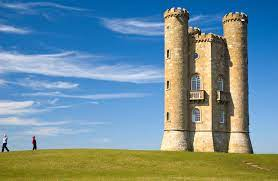One of the best ways to learn about sensory imagery is to study examples in literature that are particularly evocative.
- The Yellow Wallpaper, Charlotte Perkins Gilman (1892). “The color is repellant, almost revolting; a smouldering, unclean yellow, strangely faded by the slow-turning sunlight. It is a dull yet lurid orange in some places, a sickly sulphur tint in others.” The descriptions of color here are visual imagery. “Faded,” “dull,” and “lurid” are all adjectives we associate with color. Meanwhile, “smouldering,” “unclean,” and “sickly” are unusual descriptors, since they’re typically associated with people, not colors. By using a combination of commonplace and unusual language to describe color, Perkins Gilman both invites us to imagine the actual color of the wallpaper and imbues it with emotional weight, transforming this room into a symbol of the character’s emotional frustration and oppression.
- Moby Dick, Herman Mellville (1851). “The vast swells of the omnipotent sea; the surging, hollow roar they made, as they rolled along the eight gunwales, like gigantic bowls in a boundless bowling-green; the brief suspended agony of the boat, as it would tip for an instant on the knife-like edge of the sharper waves, that almost seemed threatening to cut it in two; the sudden profound dip into the watery glens and hollows; the keen spurrings and goadings to gain the top of the opposite hill; the headlong, sled-like slide down its other side;—all these, with the cries of the headsmen and harpooneers, and the shuddering gasps of the oarsmen, with the wondrous sight of the ivory Pequod bearing down upon her boats with outstretched sails, like a wild hen after her screaming brood;—all this was thrilling.” This passage uses kinesthetic imagery—surging, rolled, tip, dip, slide, shuddering—to give the feeling of motion on a boat. Sound is also important to this passage: we can imagine the scream of chickens, the gasps of the oarsmen, and the hollow roar of the ocean.
- The Awakening, Kate Chopin (1899). “There were strange, rare odors abroad—a tangle of the sea smell and of weeds and damp, new-plowed earth, mingled with the heavy perfume of a field of white blossoms somewhere near.” Chopin compares the smell of the sea to smells that we associate with the earth (weeds, soil, flowers) throughout The Awakening, both adding a layer of complexity to her imagery (beyond the usual salty, briny, fishy smells associated with the ocean) and positioning the sea as part of the earth. This foreshadows the pull this character will feel toward the sea.
- A Room With a View, E.M. Forster (1908). “The hour was approaching at which the continental breakfast begins, or rather ceases, to tell, and the ladies bought some hot chestnut paste out of a little shop, because it looked so typical. It tasted partly of the paper in which it was wrapped, partly of hair oil, partly of the great unknown.” By describing the taste of food with inedible objects and concepts, Forster continues to balance the expectations of travel with its realities. He also calls attention to the idea of attaching meaning to seemingly unimportant things: here, a not-too-tasty candy takes on the weight of the great unknown.
- Jane Eyre, Charlotte Brontë (1847). “I heard the rain still beating continuously on the staircase window, and the wind howling in the grove behind the hall; I grew by degrees cold as a stone, and then my courage sank. My habitual mood of humiliation, self-doubt, forlorn depression, fell damp on the embers of my decaying ire.” Descriptions of temperature and moisture are tactile imagery. In this case, the rain and Jane’s physical discomfort mirror her dark mood.


No comments:
Post a Comment